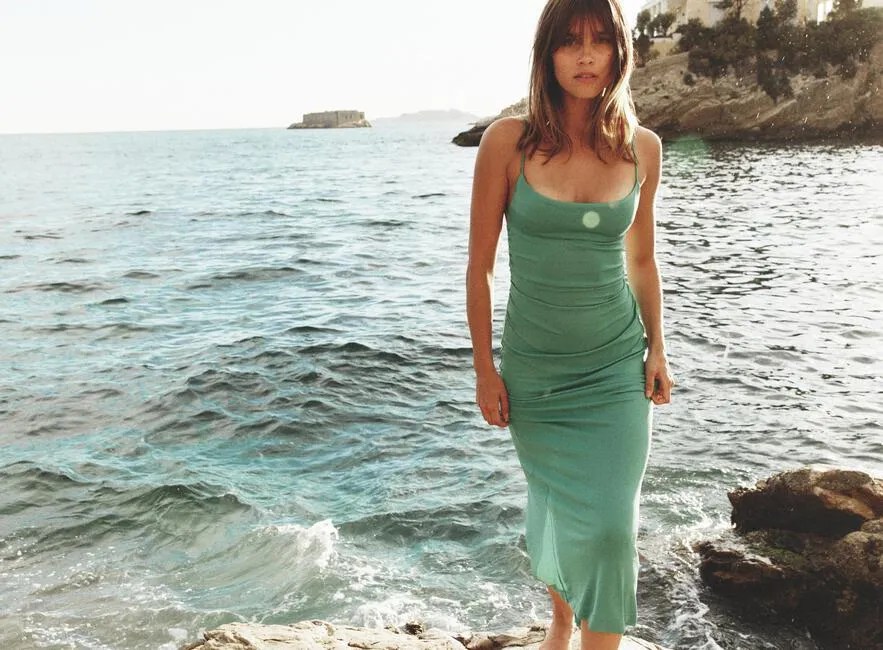An aquatic dress refers to a garment, typically a dress, designed with inspiration drawn from water, marine life, and underwater environments. These designs often aim to evoke the fluidity, colors, and textures associated with aquatic realms.
Key Characteristics
- Color Palette: Predominantly features shades of blue, green, teal, and turquoise, often accented with iridescent, silver, white, or coral hues to mimic light reflection on water, foam, or marine organisms.
- Materials & Textures: Utilizes fabrics that suggest fluidity, light, and organic forms, such as silk, chiffon, organza, satin, and jersey. Embellishments like sequins, beads, pearls, crystals, and delicate ruffles are common to represent scales, bubbles, water droplets, or wave-like textures. Sheer overlays, draping, and ruching can create a watery, ethereal effect.
- Motifs & Silhouettes: Designs frequently incorporate motifs like waves, ripples, fish scales, coral formations, seaweed, shells, and mythical sea creatures (e.g., mermaids, sirens). Silhouettes can range from flowing A-lines and empire waists that mimic water movement to figure-hugging mermaid styles or asymmetrical cuts suggesting organic growth.
Applications and Contexts
Aquatic dresses are prominent in several domains:
- Haute Couture & Fashion: Designers often showcase aquatic-themed collections on runways, pushing creative boundaries with innovative materials, intricate detailing, and conceptual forms.
- Costume Design: Essential for theatrical productions, films, ballet, opera, and performances depicting underwater scenes or marine characters.
- Themed Events & Red Carpet: Popular for underwater-themed parties, galas, art installations, and as statement pieces on the red carpet.
- Bridal & Evening Wear: Some contemporary bridal and formal evening wear designs incorporate subtle or overt aquatic elements for a unique, romantic, or avant-garde aesthetic.
Design Considerations
When creating an aquatic dress, designers often focus on:

- Movement & Fluidity: The garment should ideally flow and move with the wearer, reminiscent of water currents or the graceful motion of marine life. Fabric choice and cut are crucial here.
- Light Interaction: Materials and embellishments are carefully selected for their ability to catch, reflect, or refract light, mimicking the play of light on and under the water's surface.
- Narrative & Evocation: The dress often aims to tell a story, evoke a specific aquatic mood (e.g., serene, powerful, mysterious), or embody a particular marine creature or element.
- Craftsmanship: Intricate techniques such as embroidery, beading, pleating, and fabric manipulation are often employed to achieve complex textures and forms inspired by the aquatic world.





